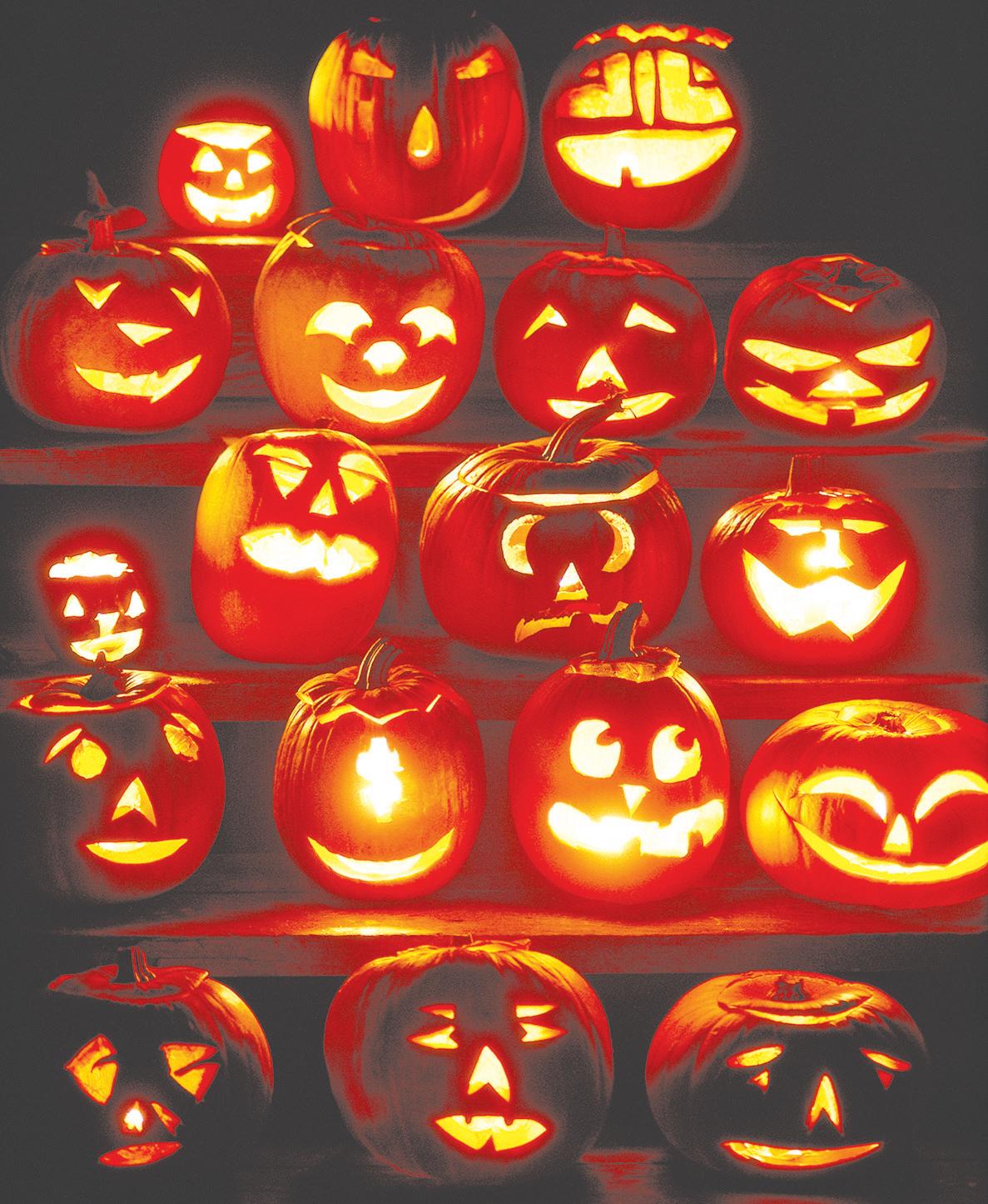
3 minute read
Preserve carved pumpkins in various ways
Jack-o’-lanterns and other carved pumpkin designs are frequently the centerpieces of Halloween festivities. The twinkling lights and orange glow of jack-o’-lanterns can add ambiance to any autumn event. The trouble with carving pumpkins is that most people want to do it right away, only to discover their pumpkins wilt and decay long before Halloween.
Nothing ruins Halloween more than visiting a home to trick-or-treat and not getting candy. Equally disappointing is a sad pumpkin display withering away on a front porch. Even though all pumpkins will eventually rot, certain tips can keep carvings from collapsing too soon.
1. Choose a sturdy pumpkin. Inspect the pumpkin of your choosing carefully, looking for gouges, spots and holes. Even a small blemish can quickly expand into a mushy mess. Select pumpkins with even color and firm flesh, and make sure that the pumpkin doesn’t feel tender when you push on the skin.
2. Visit local pumpkin stands.
Pumpkins that have been shipped miles and miles in hot cargo trucks may be overly ripened or battered. Pumpkins that were grown nearby may be fresher. Plus, buying pumpkins locally supports local farmers.
3. Scrape the insides of the pumpkin thoroughly. Any moist bits inside the pumpkin will mold quickly. The pumpkin carving experts at Pumpkin Mas- ters recommend scraping as much of the “guts” out as possible, leaving about a one-inch thickness of the wall of the pumpkin.
4. Coat the pumpkin. Preservation methods may aim to keep the pumpkin hydrated and inhibit mold and other microbial growth. Commercially sold pumpkin preservation products, such as Pumpkin Fresh, hold up well. Soaking and spraying carved pumpkins with a bleach-and-water solution also seems to preserve designs.

5. Keep it out of the elements. Store carved pumpkins in a cool, dry place. This will help slow down the rotting process for pumpkins exposed to outdoor fungi, other microbes and warm sunlight.
6. Use an artificial light source. Reduce the heat inside of the pumpkin and encourage hydration by selecting a battery-powered light instead of a lit candle to illuminate the carving.
7. Skip the carving.
Once pumpkin skin is compromised, microbes can enter. In lieu of carving, paint or decorate pumpkins in other ways if you want them to stay fresh for a long time. Glow-in-the-dark paint can help pumpkins stand out at night.
Carved pumpkins may last a week or two, while uncut pumpkins can last for a month or more.
Keeping pumpkins hydrated and mold-free will prolong your designs.





Halloween is steeped in tradition. Halloween season also is a time of year when superstitions take root and add to the spooky and often silly nature of the holiday.
Some Halloween traditions can be traced back to the ancient Celts and their belief that spirits of the deceased were able to wander the earth during the time they called Samhain. Costumes were worn so the living could blend in with ghosts, and treats were laid out to appease the spirits.
Over the years, additional Halloween superstitions have emerged. The origins vary, but the following are some common superstitions to consider as Oct. 31 draws near.
Some believe that bats flying around a house on Halloween — either indoors or outside — is a sign that spirits lurk nearby.
• Black cats have long been thought to be companions of witches or “familiars,” demonic animals gifted to them. While some think it’s bad luck for a black cat to cross your path, in Ireland, Scotland and England, black cats symbolize good luck.

• One Halloween superstition states that if you walk around your home backward three times and then counterclockwise three times before the sun sets on Halloween, you will ward off nearby evil spirits.
• Legend has it that you will have good luck if you sleep facing south the night before Halloween.
• Apples can help people determine if they will live long lives. On Halloween night, you have to make an unbroken apple peel, which will estimate how long you will live. The longer the peel is, the longer you’ll live.
• Another superstition suggests that if you spot a spider on Halloween, the spirit of a deceased loved one is watching over you.


• It is said that no person should lie in a coffin while alive, even for fun. Otherwise, he or she is inviting death. Also, no item of clothing belonging to a living person should ever be put on a corpse when it is placed in a coffin, for as it rots in the grave so will the rightful owner’s health begin to decline.



• Children who are born on Halloween are said to have the gift of second sight, which may also include the power to ward off evil spirits.
• People have been warned not to turn around on Halloween night if they hear footsteps behind them, as this could mean Death is following.
•There is a superstition that when you pass a graveyard or house where someone has died, you should turn your pockets inside out to make sure you don’t bring home a ghost in your pocket.
•Jack-o’-lanterns light up Halloween nights. Jack-o’-lanterns were originally made out of hollowed-out turnips, but pumpkins replaced the turnips when the Irish emigrated to North America. Jack-o’-lanterns were used to guide lost souls and keep evil spirits at bay.









